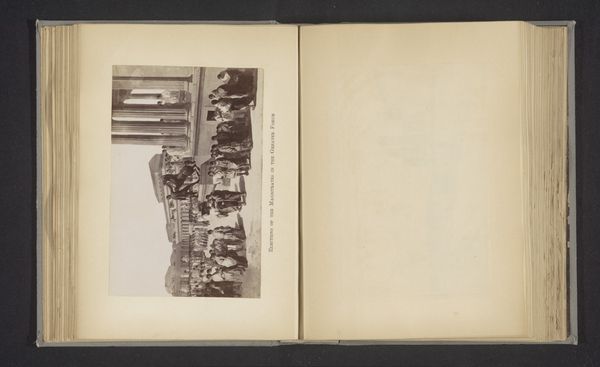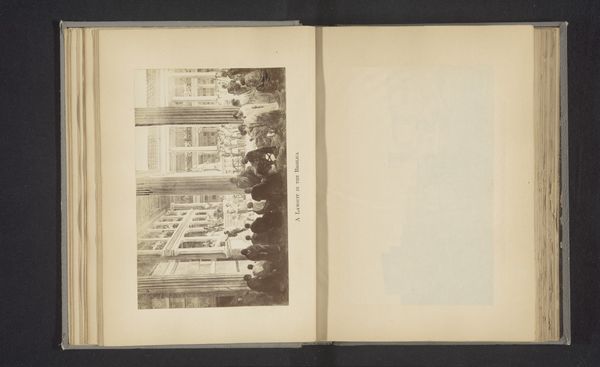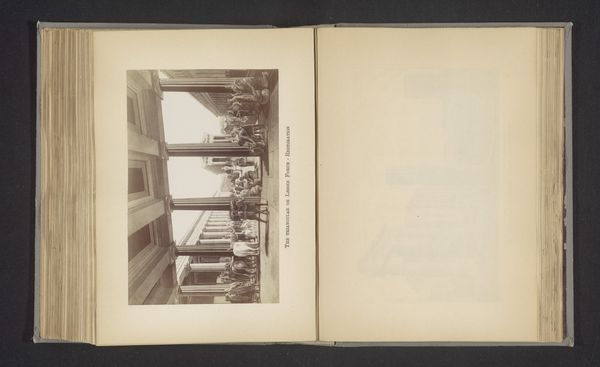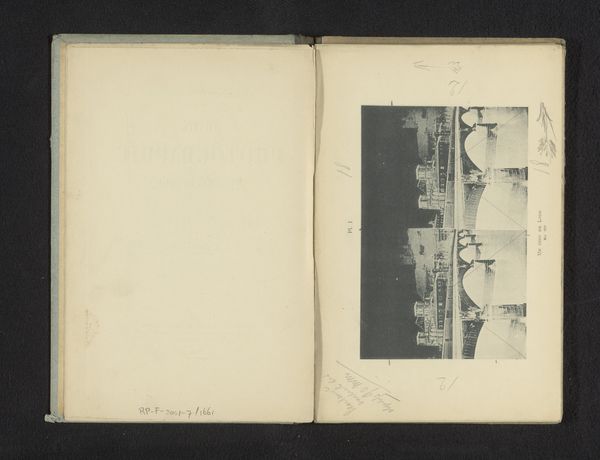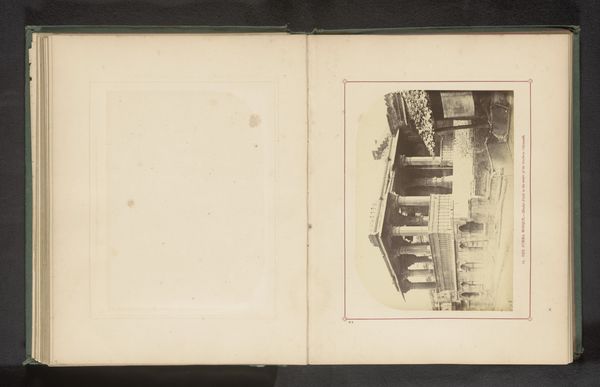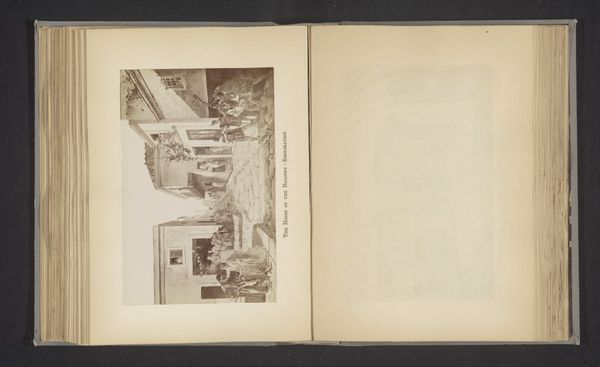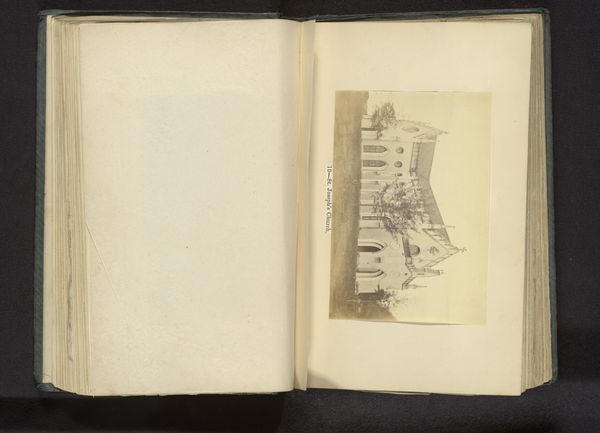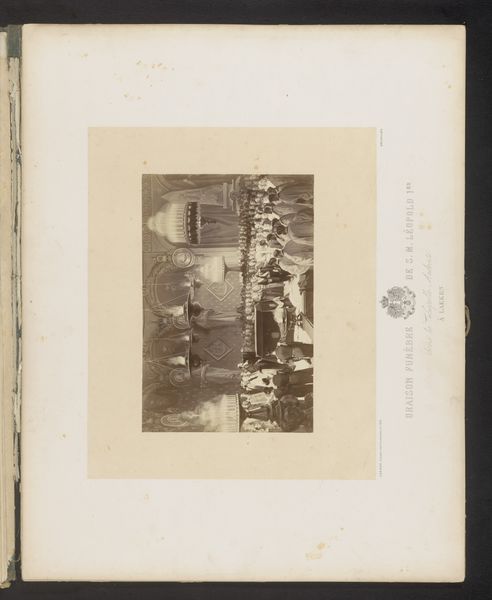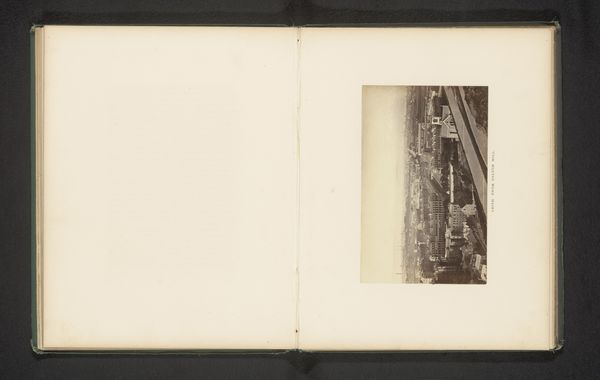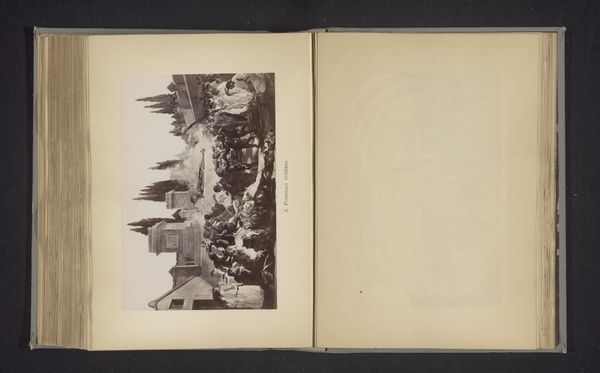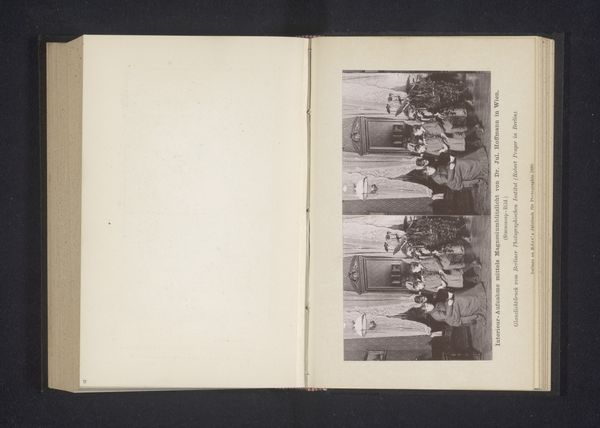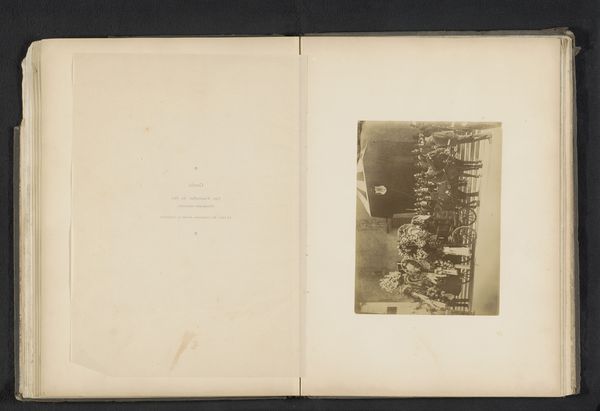
Fotoreproductie van een gezicht worstelende mensen bij de Stabiaanse Thermen before 1895
0:00
0:00
print, photography
#
aged paper
#
homemade paper
#
paper non-digital material
#
paperlike
# print
#
sketch book
#
personal journal design
#
photography
#
personal sketchbook
#
ancient-mediterranean
#
thick font
#
genre-painting
#
paper medium
#
design on paper
Dimensions: height 120 mm, width 184 mm
Copyright: Rijks Museum: Open Domain
Curator: Before us is a photographic reproduction dating from before 1895, titled "Fotoreproductie van een gezicht worstelende mensen bij de Stabiaanse Thermen." It depicts a scene of wrestlers near the Stabian Baths. Editor: My initial reaction is that the composition feels surprisingly modern, even with the subject matter rooted in antiquity. The lines of the architecture draw my eye and then abruptly collide with this messy central pile. Curator: Indeed. What you are sensing might derive from its historical position; photography’s own emergence as it was attempting to document and "scientifically" capture history. These ruins, therefore, weren't just buildings; they were sites imbued with social, political, and often colonized meanings that required "objective" representation. Editor: Right, I see that the photographic image itself functions symbolically here. What's particularly striking to me is the energy captured—the wrestlers locked in this eternal struggle right alongside the passive consumption of spectators watching in what could be seen today as hypermasculinity on display. Is there anything especially poignant in this choice of moment in your opinion? Curator: Yes. Genre paintings that render these "everyday" slices of ancient life participated in complicated politics. They romanticized classical cultures as origin points of Western society, which also could legitimize colonial endeavours, connecting a supposedly unbroken line of civilized behaviour. It flattens the violence into mere aestheticized sport and further reduces real people, of a vastly complex civilisation, to caricatures and tropes. Editor: The act of documenting a wrestling match almost performs the work’s themes by further entrenching power and observing brutality as spectators, or even as cultural researchers today. Curator: Precisely. That this very image becomes another document adds to that layering. To contemplate this through today’s lens allows the spectator a renewed experience when thinking about grappling between culture and progress, especially for minority groups globally whose practices were captured without due historical consideration. Editor: Thank you. I will look at similar artwork with greater scrutiny to observe cultural impact of captured moments. Curator: And hopefully continue to unravel and challenge embedded narratives.
Comments
No comments
Be the first to comment and join the conversation on the ultimate creative platform.
